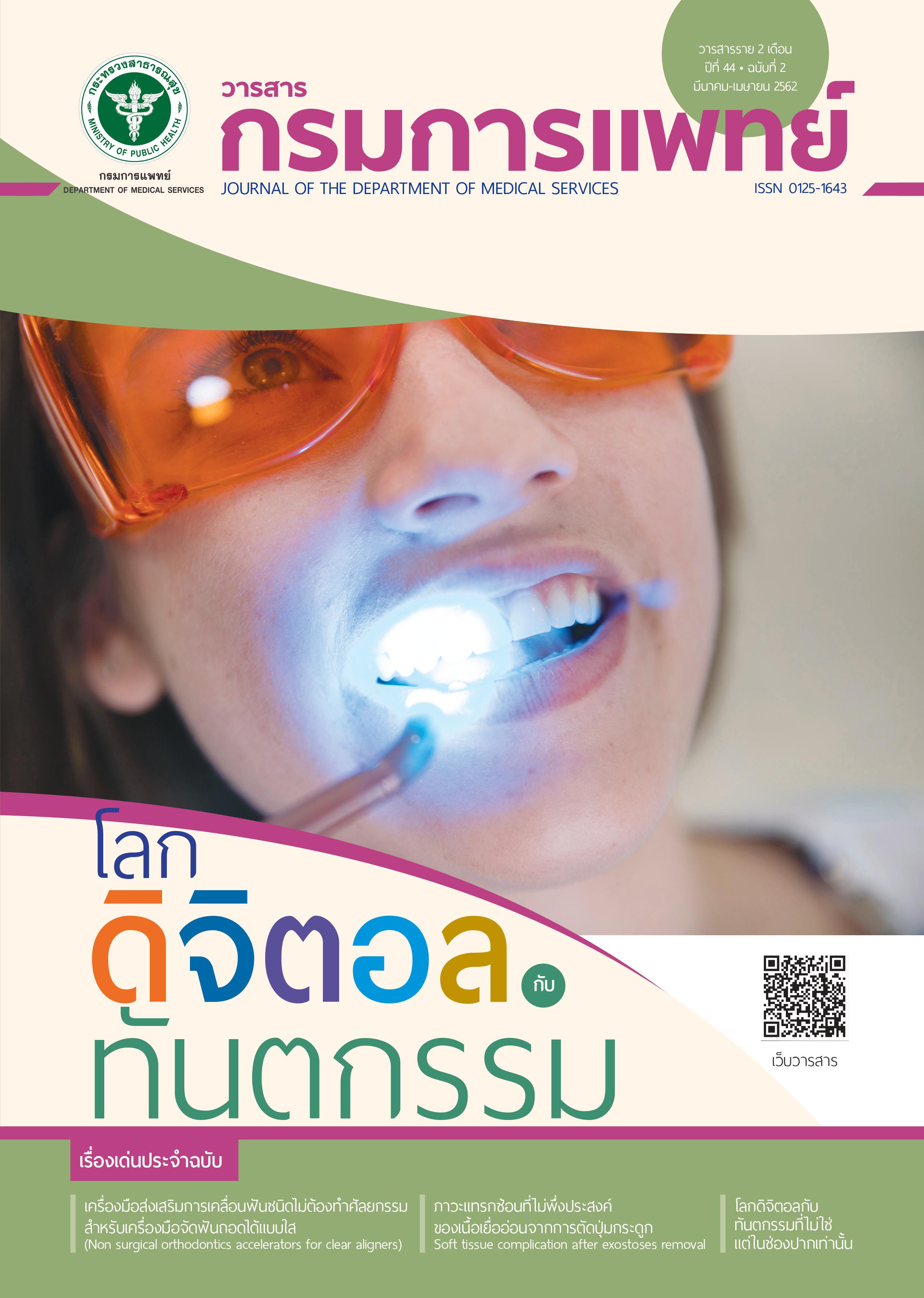Comparison of Fluoride and Catechin Levels in Green Tea Extract at Various Geographical Locations in Thailand
Keywords:
Green tea, Camellia sinensis, Fluoride, Anti-cariogenicReferences
Petersen PE, Ogawa H. Prevention of dental caries through the use of fluoride–the WHO approach. Community Dent Health 2016;33:66-8.
Petersen PE. The World Oral Health Report 2003: continuous improvement of oral health in the 21st century–the approach of the WHO Global Oral Health Programme. Community Dent Oral Epidemiol 2003; 31:3-24.
Bureau of Dental Health. Report on the Eighth National Oral Health Survey of Thailand 2017. Nonthaburi: Department of Health, Ministry of Public Health; 2018.
Marsh PD. Microbial ecology of dental plaque and its significance in health and disease. Adv Dent Res. 1994; 8:263-71.
Koontongkaew S. Cariology. 2 ed. Bangkok: iGroup Press Limited; 2009.
Van Strydonck DA, Slot DE, Van der Velden U, Van der Weijden F. Effect of a chlorhexidine mouthrinse on plaque, gingival inflammation and staining in gingivitis patients: a systematic review. J Clin Periodontol. 2012;39:1042-55.
McBain AJ, Ledder RG, Sreenivasan P, Gilbert P. Selection for high-level resistance by chronic triclosan exposure is not universal. J Antimicrob Chemother 2004;53:772-7.
Juneja LR, Kapoor MP, Okubo T, Rao T. Green Tea Polyphenols:Nutraceuticals of Modern Life: CRC Press; 2013.
Ketcharoen S, Pudmeetes U. Tea. Bangkok: Extension and Training Office, Kasetsart University.
Saad R, Fadli Asmani P, Khan J, Kaleemullah M, Aldahlli S, Kazi H, et al. Influence of Geographical Location on the Antioxidant Activity of Green Tea. Int J Pure App Biosci 2016; 4:56-63.
Mutuku A, Wanyoko J, Wachira F, Kamunya S, Chalo R, Kimutai S, et al. Influence of Geographical Regions on Catechin and Caffeine Levels in Tea (Camellia sinensis). American Journal of Plant Sciences 2016; 7:562-71.
Cabrera C, Artacho R, Gimenez R. Beneficial effects of green tea--a review. J Am Coll Nutr 2006; 25:79-99.
Yu H, Oho T, Xu LX. Effects of several tea components on acid resistance of human tooth enamel. J Dent 1995; 23:101-5.
Suyama E, Tamura T, Ozawa T, Suzuki A, Iijima Y, Saito T. Remineralization and acid resistance of enamel lesions after chewing gum containing fluoride extracted from green tea. Aust Dent J 2011; 56:394-400.
ISO. ISO 10359-1:1992 Preview Water quality -- Determination of fluoride -- Part 1: Electrochemical probe method for potable and lightly polluted water; 1992.
WHO. Guidelines for drinking-water quality 4th edition. WHO Chron. 2011; 38:104-8.
Perva-Uzunalić A, Škerget M, Knez Ž, Weinreich B, Otto F, Grüner S. Extraction of active ingredients from green tea (Camellia sinensis): Extraction efficiency of major catechins and caffeine. Food Chem 2006; 96:597-605.
Patnaik P. A comprehensive guide to the hazardous properties of chemical substances: John Wiley & Sons; 2007.
Sakanaka S, Kim M, Taniguchi M, Yamamoto T. Antibacterial substances in Japanese green tea extract against Streptococcus mutans, a cariogenic bacterium. Agric Biol Chem 1989; 53:2307-11.
Otake S, Makimura M, Kuroki T, Nishihara Y, Hirasawa M. Anticaries effects of polyphenolic compounds from Japanese green tea. Caries Res 1991; 25:438-43.
Downloads
Published
How to Cite
Issue
Section
License
บทความที่ได้รับการตีพิมพ์เป็นลิขสิทธิ์ของกรมการแพทย์ กระทรวงสาธารณสุข
ข้อความและข้อคิดเห็นต่างๆ เป็นของผู้เขียนบทความ ไม่ใช่ความเห็นของกองบรรณาธิการหรือของวารสารกรมการแพทย์



